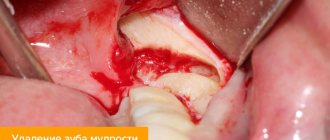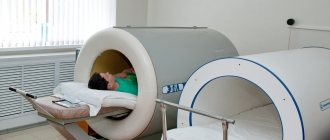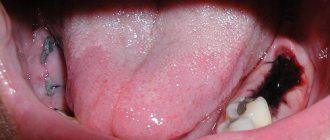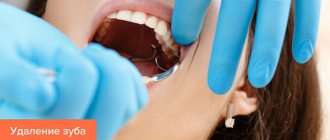Dental treatment can be therapeutic or surgical, and pain can occur after any type of intervention. If your wisdom tooth hurts after treatment, in most cases, this is a normal physiological reaction of the tissues to the procedure performed. Usually, painful sensations are quickly relieved with painkillers and go away on their own within a couple of days. But there are situations when pain after removal of the figure eight occurs due to complications or a violation of the technology of the therapeutic manipulation.
The dentist will definitely consult the patient about how the recovery process after the intervention should normally proceed, and if any symptoms appear, you should immediately consult a doctor. If all the doctor’s recommendations regarding the rehabilitation period are followed, but the painful sensations only increase, this is a direct indication to come for another appointment.
Types of deletion
Wisdom teeth (eights, third molars) are larger than other dental units in the row. They differ not only in size, but also in the complex anatomy of the root system. Eight has from 2 to 6 roots
, which are often closely intertwined with each other. Given the complex arrangement of wisdom teeth, when they are removed, a significant wound is created.
The risk of complications will directly depend on how difficult the figure eight extraction was. With simple extraction, when the tooth is intact, the roots are not intertwined, and there are no other pathologies (pulpitis, periodontitis, etc.), the risk of complications is minimal. In such a situation, the doctor uses forceps or an elevator to remove the tooth from the socket.
If the wisdom tooth is incorrectly positioned (horizontal eruption, severe curvature), intertwined roots, significant destruction of the coronal part, or the presence of inflammation, a more global surgical intervention may be required. An incision in the gum, cutting a tooth into pieces with a drill, removing root fragments through the jaw bone and other manipulations significantly increase the traumatic nature of the procedure. Aching pain, swelling after removal of the figure eight, increased temperature (up to 37.5℃), hematoma on the cheek - this is a normal reaction to the intervention, which lasts no more than 5-7 days.
Pros and cons of local anesthesia in dentistry
Among the advantages of local anesthesia:
- affordable price;
- lack of significant impact on the patient’s body;
- low risk of adverse reactions;
- the ability to treat and remove baby and molars without pain.
The disadvantages include:
- the possibility of developing allergies, including anaphylactic reactions, laryngeal edema;
- low effectiveness if there is a pronounced inflammatory process in the maxillofacial area.
If the anesthesia method is chosen correctly, the removal will take place quickly and without complications. Trust your health to experienced dentists. Then even the most complex dental problems will be solved quickly and without pain.
Why complications arise
After extraction, a wound is left in the gum and bone in which a blood clot (fibrin) forms. It “seals” the wound, preventing infection, and becomes the basis for the formation of new tissue that fills the space formed after the removal of the 8. After uncomplicated removal, healing lasts about a week. On days 3-4, the blood clot is gradually replaced by granulation tissue, which gradually fills the entire socket. Already after a month, the granulation tissue is completely replaced by connective tissue, and after 3 months - by bone.
Removal of third molars can have negative consequences that appear almost immediately after the intervention. Among the most common complications:
- “dry socket” - when a blood clot does not form or dissolves too quickly;
- paresthesia - damage to the nerve endings around the removed unit;
- alveolitis - inflammation of the socket;
- bleeding;
- cyst - fibrous formation at the site of an extracted tooth;
- endogenous periostitis (flux).
In rare cases, stomatitis, osteomyelitis, jaw trauma, and perforation of the bottom of the maxillary sinus are observed. The occurrence of complications is usually associated with ignoring the dentist’s recommendations regarding oral hygiene during the healing period, decreased immunity, and violation of surgical technique.
Contraindications
Sometimes doctors cannot use anesthetics when extracting teeth. This is due to the contraindications of the drugs themselves and the individual characteristics of the patient’s body.
Among the most common contraindications:
- severe diseases of the cardiovascular system (stroke, myocardial infarction, after which less than six months have passed);
- allergy to compounds included in the painkiller.
If a patient has an endocrine disease that occurs in a decompensated form, he needs to go to the hospital for removal.
It is important to know . To avoid complications after using anesthesia, you need to inform the dental surgeon in advance about all existing chronic diseases, allergies, and medications used.
Pain after wisdom tooth removal
Patients are always interested in the question, how many days does the jaw hurt after wisdom tooth removal? Pain after surgery is a standard tissue response to injury. Normally, the pain subsides within a few hours or within 3 days after extraction (in case of complicated removal). The pain a patient experiences after wisdom tooth removal indicates the success of the procedure.
- The first discomfort and pain appear 2-3 hours
after the intervention (when the anesthetic wears off). - The first 3-4 days
there is aching pain, redness and swelling of the soft tissues. If the extraction is successful and the hole is properly cared for, the pain will gradually disappear. - Over the next 2 weeks
, if there are no complications, the wound will heal completely, and minor pain may occasionally occur in the late afternoon. - After 3 weeks,
all discomfort should disappear.
If a wisdom tooth has been pulled out and it hurts for more than 5 days, the intensity of the pain increases, it becomes throbbing, debilitating, accompanied by fever, swelling - this indicates a complication and requires immediate medical intervention.
WHAT ARE THE ADVANTAGES OF THE DRUG
The main advantages of Ketanov are its following features:
- the ability to relieve severe pain of various origins, when other medications are helpless;
- minimum “side effects” when taken (compared to other painkillers);
- long-term analgesic effect (at least 6-8 hours);
- the possibility of abrupt drug withdrawal and the absence of addiction syndrome (withdrawal) even after a long course of administration (up to 6 months).
BY-EFFECT
Unfortunately, in some people this drug can cause a lot of unpleasant phenomena in the body. The most common of them include:
- dyspeptic symptoms (dry mouth, nausea or vomiting, inflammation of the stomach or exacerbation of ulcers, constipation or diarrhea, stomach pain);
- neurological changes (headache or dizziness, nervousness or excessive drowsiness, hyperesthesia of some parts of the body);
- from the ENT organs (sometimes it reduces hearing or provokes ringing in the ears, and can impair vision);
- therapeutic disorders (high blood pressure, slow heartbeat);
- from the urinary organs - swelling is sometimes possible.
What could be causing the pain?
If the pain after removing the figure eight does not subside within 5-7 days, but rather intensifies, this may indicate the following complication:
- Alveolitis
is an inflammation of the socket associated with the absence of a blood clot, poor hygiene, infection of the wound, or the presence of a bone fragment in the socket (if the tooth was extracted in parts). - Severe damage to the blood vessels
of the surrounding tissues - in addition to pain, there is a hematoma, swelling of the gums and cheeks. - Allergy
to anesthetic, hemostatic sponge (if it was used during the procedure).
As inflammation develops, pain is accompanied by an unpleasant odor, purulent discharge from the socket, the formation of gray plaque, enlarged lymph nodes, increased temperature, and deterioration in general well-being. In this case, you need to see a doctor immediately.
Aching jaw
When the jaw hurts after wisdom tooth removal, it is usually due to the fact that the surgeon put pressure on it to gain access to the molar. Or during the procedure, blood vessels, nerve endings, and ligaments of adjacent dental units were injured. These symptoms are quite normal, if there is no difficulty opening the mouth, there is no pronounced swelling of the gums or soft tissues of the face.
It hurts to swallow
After extraction of the lower 8, you may experience a sore throat or pain when swallowing. This symptom appears against the background of severe damage to soft tissues, with severe swelling of the gums, cheeks, or due to trauma to the trigeminal nerve. If the trigeminal nerve was affected during the operation, there is not only pain, which can radiate to the temple, ear, neck, but numbness on the face, in the area of the removed unit, and increased salivation. Also, a sore throat may occur if there is inflammation or purulent process around the affected molar. This symptom can last up to 2 weeks. To avoid complications, you should visit a neurologist or dentist.
Throbbing pain
If your gums ache after wisdom tooth removal, but the discomfort is quickly relieved with an analgesic and disappears after 2-3 days, this is evidence of normal healing. On the contrary, throbbing pain in the jaw or gums indicates possible inflammation, damage to blood vessels and nerves. With neuritis (damage to the jaw nerves), it can radiate to the neck, throat, temple, ear, eye. The pain increases, prevents you from falling asleep, and interferes with normal life - in this case, you need to immediately consult a dentist, this is a sign of inflammation.
THERAPEUTIC ACTION
Ketanov is a non-steroidal anti-inflammatory drug with systemic effects with a particularly powerful analgesic (pain-relieving) effect.
When administered, it has a triple effect on the body:
- relieves heat and inflammation;
- has an analgesic effect.
However, it is the super-powerful analgesic effect that allows this medicine to be used for unbearable toothache.
DOES KETANOV HELP FOR TOOTH PAIN?
The drug has a very powerful peripheral effect. It is this effect of the medicine that “eclipses” all its other qualities. Ketanov is a non-narcotic analgesic substance with an excellent analgesic effect.
Ketanov helps with toothache much more strongly than other drugs from the same group.
For example:
- butadione – 453 times;
- analgin – 350 times;
- nalgesin – 50 times;
- indomethacin – 5 times.
Obviously, the most powerful peripheral effect of Ketanov compared to other non-steroidal anti-inflammatory drugs. That is why this medicine is a powerful means of relieving various pains, including those caused by traumatic or postoperative conditions.
KETANOV'S WORK IN THE BODY
The medicine inhibits the activity of special enzymes, as a result of which the production of modulators of inflammation, pain and thermoregulation is suspended. The analgesic power of the drug is equal to that of morphine-like substances. On average, the onset of action of the drug is half an hour after intramuscular administration and an hour after using the tablets.
Ketanov does not cause:
- disorders in breathing or nervous system;
- the appearance of vomiting or nausea;
- urinary retention and bowel function;
- increased pressure;
- increased heart rate;
- drug addiction.
Ketanov is able to accumulate in the liver tissue and penetrate into breast milk.
It is excreted through the urine and partially through the intestines.
How to relieve pain and discomfort
- Do not touch the blood clot in the socket with your tongue, toothbrush, hands or foreign objects;
- make oral baths from herbal decoctions and antiseptic solutions;
- if the pain radiates to the ear or another part of the head, take a painkiller;
- exclude hot food and drinks.
If your gums hurt for several days after wisdom tooth removal or you have a headache, you don’t need to worry too much. Analgesics prescribed by your dentist will help you cope with these symptoms. If the discomfort does not go away after a week, painkillers do not help much - you need to go to the doctor. If the temperature is above 37.5℃, which does not decrease to normal, the development of an allergic reaction (to an analgesic, hemostatic sponge), or a sharp deterioration in health, you should consult a doctor immediately.
Content:
- Options for local anesthesia of a diseased tooth 1.1. Application 1.2. Infiltration 1.3. Conductor 1.4. Intraosseous 1.5. Intraligamentary
- Contraindications
- Pros and cons of local anesthesia in dentistry
To ensure that tooth extraction takes place with maximum comfort for the patient and is not associated with pain, dentists use special painkillers.
If the case is very complex and local anesthetics do not cope, anesthesia is used. Painkillers used in dentistry block the transmission of nerve impulses from the torn unit to the brain. Due to this, all manipulations carried out by a specialist are calmly perceived by a person.
What are the consequences of not taking antibiotics?
If a doctor has prescribed a medicine, but the patient does not want to take it because of some personal beliefs, the situation often turns against him. It may turn out that the doctor’s worst fears will come true - the inflammatory process will spread to the jaw bone. Then osteomyelitis will develop.
This purulent disease is quite insidious. It can affect internal organs and cause sepsis, which, in turn, can be fatal. Therefore, you should not argue with the dental surgeon and ignore his appointments. Take care of your health.
Popular analgesic drugs
Non-narcotic analgesics are most often used to relieve pain. Additionally, they contain anti-inflammatory ingredients. After dental procedures during the recovery period, all patients are recommended to take painkillers with anti-inflammatory effects.
Taking analgesics can cause irritation of the gastric mucosa and increase the likelihood of bleeding. That is why patients with gastrointestinal pathologies should use them under the supervision of a doctor. After the disappearance of unpleasant symptoms, the medication is stopped.
Most often, dentists recommend taking the following medications.
Ketanov
This drug is preferred if dental procedures turn out to be complex and lengthy. The patient, in turn, should not doubt its effectiveness, since it is the most effective remedy compared to other analgesics. It is available in several dosage forms: tablets, solution for injection. Ketanov has an anti-inflammatory and at the same time antipyretic effect.
Ketorolac is another non-narcotic analgesic. On its basis Ketanov was created. Ketorol is a complete analogue of this remedy.
The medication is taken according to the instructions, but no more than 4 times a day. It is preferable to take the medicine at approximately equal intervals. The tablet should be taken with a sufficient amount of water, but not less than 100 ml. In case of urgent need, the dosage is increased. The maximum duration of treatment is 1 week.
Ketanov injections are given in the shoulder or buttock. The daily dosage should not exceed 3 mg for adults, and for elderly patients - 2 mg.
Taking Ketanov together with glucocorticosteroids, calcium supplements or other painkillers is prohibited. This can lead to dyspeptic disorders and other negative gastrointestinal symptoms.
Nimesil
The active component is the substance nimesulide. The drug shows high effectiveness in treating swelling, high temperature and pain after the removal of eight teeth. Available in several dosage forms: suspension, powder, gel, tablets, syrup. A single dosage is 100 mg. When teething wisdom teeth, the dosage can be slightly increased.
Nimesil has many analogues. Among them, the most famous are Nurofen, Ibuprofen, Nise and Diclofenac.
This product is strictly prohibited for use during pregnancy and lactation, and for children under 12 years of age. In addition, patients with liver and kidney diseases should take it with caution. Often, while taking it, side effects occur that are effective in the gastrointestinal tract and central nervous system,
Analgin
The drug is available in several forms: tablets, solutions for intramuscular/intravenous injection, capsules, suppositories. It has a pronounced analgesic and antipyretic effect. The active ingredient is metamizole. The maximum daily dosage is 500 mg two or three times. The dosage for children is calculated taking into account body weight (5-10 mg of the drug per 1 kg).
Analgin is strictly prohibited for people with pathologies of the cardiac and hematopoietic systems, and for bronchial asthma. Also contraindicated during pregnancy and lactation. If you have hypersensitivity to the active components, you should also avoid taking Analgin. Its most famous analogues are Spazmalgon, Tempalgin and Baralgin.
Oxadol
The active ingredient of the non-narcotic painkiller Oxadol is nefopam. It has no anti-inflammatory or antipyretic effect. Also, the medicine does not have a pronounced effect on the functioning of the blood coagulation system. After tooth resection, its dosage is 60 mg three times a day.
Taking Oxadol may be accompanied by side effects. Patients usually complain of nausea and drowsiness, tachycardia. Migraine attacks may occur. If such symptoms occur, it is better to stop using Oxadol and replace it with an analogue product.
Movalis
Movalis is characterized by a pronounced analgesic and at the same time anti-inflammatory effect. It has the following forms of release: capsules, suppositories, injection solution. During pregnancy and breastfeeding, the use of Movalis is strictly prohibited. It is also better to avoid it at the stage of planning or conception, because the active components of the product suppress fertility.
Taking Movalis may be accompanied by side effects from the gastrointestinal tract and central nervous system, respiratory and cardiac systems. In some cases, patients note the appearance of allergic reactions. Analogues of the drug are Xefocam, Amelotex and Meloxam.
Rofika
The drug belongs to the group of non-steroidal anti-inflammatory drugs. The active substance is Rofecoxib. The medicine is available only in tablet form. The main indications for its use are joint diseases and other rheumatic lesions. However, its use is also possible after tooth extraction. Rofika is available from pharmacies only with a doctor's prescription.
The medication should not be taken by children under 12 years of age. Also contraindications for use are pregnancy and breastfeeding, bronchial asthma, and vascular disease. Popular analogues are Roff, Tselkoks, Artoxib.
Basic painkillers
Not any anesthesia can be used when extracting a tooth. In dentistry, only the most common and effective medications are used. And almost every hospital has Novocaine.
But in modern treatment, novocaine is used much less frequently. If previously not a single operation could be done without it, now this drug causes an allergic reaction in most people.
It has a number of side effects:
- dizziness;
- lethargy;
- lowering blood pressure.
Today there are more intense anesthetics, and therefore novocaine is used only in combination. It is injected into the body with a small dose of adrenaline. In combination, these drugs have the best analgesic functions. But such a mixture should not be prescribed to people whose blood pressure is off the charts.
For infiltration anesthesia, a 0.5% lidocaine solution is used. This drug can be used for the conduction method; only a 1–2% solution is required. For an adult, the norm is 300–400 mg.
Side effects of this medicine include:
- headache;
- fatigue;
- loss of sensation in the lips and tongue;
- heart rhythm is disturbed;
- blood pressure decreases;
- there may be hives.
The most modern anesthesia is a medicine based on the substance articaine. Such drugs can provide long-term and reliable pain relief. It is used by a large number of dental surgeons. The substance reaches its maximum effect after 10 minutes and maintains its result for 1–3.5 hours.
But no matter how good the drug is, it always has side effects:
- muscle twitching;
- headache;
- tremor;
- nausea;
- vomiting reflex;
- diarrhea.
These are the most common side effects. But sometimes others happen:
- blood pressure decreases;
- cardiac arrhythmia is disturbed;
- rashes appear on the skin;
- angioedema may occur.
These painkillers cannot be used for meningitis, tumors, osteochondrosis, spondylitis, tuberculosis, metastatic lesions of the spine, heart failure, tumors in the abdominal area, severe arterial hypotension, and hemostasis disorders. Use with caution during pregnancy. The drug may cause a decrease in the fetal heart rate.
A very good drug based on articaine is Ubistezin. It also contains adrenaline. It reduces blood vessels in the area where anesthesia was administered. This makes it difficult to absorb the substance. As a result, the analgesic effect begins to act within 3 minutes. In addition to the above listed side effects that drugs based on articaine have, Ubistezin also adds the likelihood of an ischemic zone in the area where anesthesia was administered. This occurs if a blood vessel has been hit or a nerve has been damaged.
Anesthesia methods
Anesthesia can be local or general. The local form is divided into external and injection methods. The external method allows you to anesthetize superficial tissues using medicinal substances. These can be special ointments, gels, devices with electromagnetic waves, simply applications. The last method is used most often. The application is a cooling plate. It is applied to the gums, and the patient does not feel pain. This method is usually used to remove baby teeth in children.
The injection method involves injecting an anesthetic substance through a needle.
There are 4 types of anesthesia:
- Conductor. The method allows you to anesthetize several teeth at once. An anesthetic is injected into the area of the last tooth where the branch of the nerve is affected, resulting in blockage of the entire nerve.
- Infiltration. An anesthetic substance is injected into the projection area of the apex of the tooth root.
- Intraligamentous. The medicine is administered through the gum. As a result, the tooth and the surrounding gum area are numbed. For this method, a special syringe with a dispenser is used. It allows you to administer a minimum of anesthetic substance.
- Intraosseous. It is the best anesthesia. In this case, the injection is made directly into the spongy bone. It is she who covers the dental alveoli.
General anesthesia (anesthesia) is done very rarely. It should not be used for people who have heart problems. This method of anesthesia is used only in the most difficult cases. Dentistry must be equipped with a special office and all the necessary equipment. And also during surgical operations, the presence of an anesthesiologist next to the patient is mandatory. Only the doctor decides which anesthesia is best for tooth extraction. Everything will depend on the complexity of the procedures and the general condition of the tooth.











